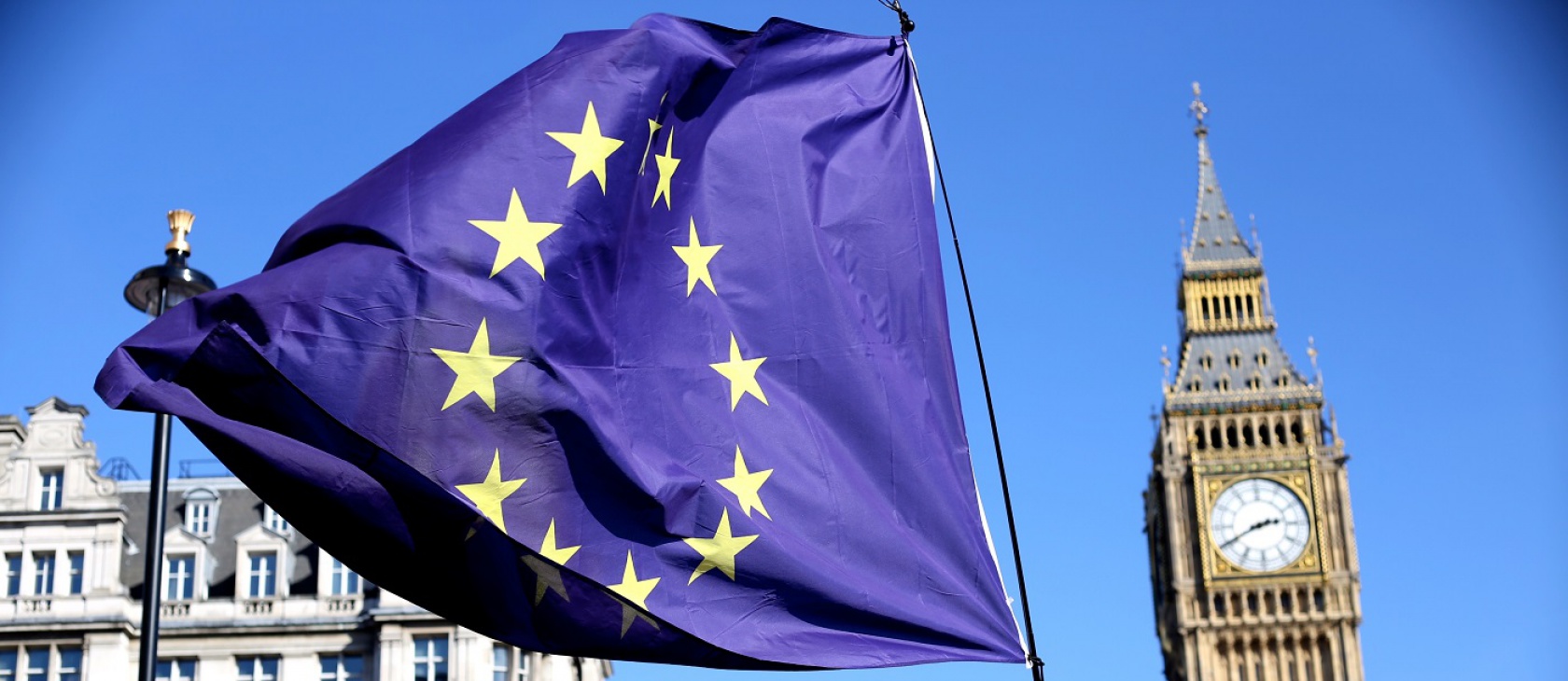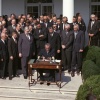After frenetic all-night talks, the UK prime minister and the president of the EU announced early Friday morning that the first round of Brexit talks had made “sufficient progress” to go forward. What does that mean for the UK, EU, and the future of economic liberty, deregulation, and reclaiming national self-determination?
What are the two rounds of Brexit talks?
In a national referendum last June 23, a majority of British citizens voted to leave the European Union. After a UK Supreme Court decision, Parliament passed a bill in March empowering the prime minister to enact their will. Prime Minister Theresa May immediately triggered Brexit talks and set the date for the UK’s formal exit at 11 p.m. on March 29, 2019.
May wanted to pursue a comprehensive agreement that, in one MP’s words, would “have your cake and eat it.” On the one hand, the UK hoped to sever ties with the EU customs union, free the UK to strike free trade deals, repeal onerous EU regulations, restrict the European Court of Justice’s jurisdiction over UK law, and control its own immigration policy. On the other hand, Brits hoped to strike a “deep and special partnership” that would maintain advantageous access to the EU Single Market and facilitate cooperation on mutual security and counterterrorism measures.
The European Union insisted negotiations be broken into two phases. The first round, which concluded on Friday, dealt with:
- the “divorce bill,” or the amount of money that Great Britain would have to pay the EU before (and, in some cases, after) leaving;
- the legal status of the three million EU citizens living in the UK, and the 2 million UK citizens living in the remaining EU27 nations; and
- the border between Northern Ireland, which is Protestant and part of the United Kingdom, and the Republic of Ireland, a Catholic EU member.
As the UK attempted to pivot to trade and post-Brexit relations, EU negotiators led by Michel Barnier refused to budge. Today, European Commission President Jean-Claude Juncker announced that “sufficient progress” had been made to move on to round two.
What did the UK and EU just agree to?
All provisions in the 16-page joint report come with “the caveat that nothing is agreed until everything is agreed.” Under the present terms of the agreement:
Divorce bill. The UK’s divorce bill will be between £35 and £39 billion ($46 to $52 billion U.S.). The EU sets spending levels in the Multiannual Financial Framework, which covers seven years. The MFF for 2014-2021 was passed while the UK was a member, based on the understanding that the EU could rely on its £8.6 billion annual net contribution. Somewhere between £17 from £19 billion will go to the MFF, and another £20 billion to fund projects that have already been agreed upon.
However, the “divorce bill” works both ways. For instance, the EU owes the UK its investment in the European Investment Bank: £3.1 in paid-in capital and as much as £8.9 billion total investments. The EU had said it could take them until 2054 to comply. The agreement now states, “The UK share of the paid-in capital will be reimbursed in 12 annual instalments starting at the end of 2019,” but no other payments would be made.
Citizens’ rights and immigration. May announced on Friday, “EU citizens living in the UK will have their rights enshrined in UK law and enforced by British courts. They will be able to go on living their lives as before.”
Controversially, the agreement means that the European Court of Justice will have continuing jurisdiction over disputes involving EU citizens living in the UK. British courts must pay “due regard” to ECJ decisions, and they may refer cases to the ECJ for eight years after Brexit (2027). This is a compromise between the EU, which asked for 15 years jurisdiction, and the UK, which wanted five
EU citizens enjoy freedom of movement to the UK until March 29, 2019. Their relatives may join them after that point.
Northern Ireland border. There will be no hard border in Ireland. After decades of warfare, the two sides adopted the Good Friday peace agreement in April 1998, agreeing to maintain an open border. But any regulatory difference between Northern Ireland and the EU could lead to border and customs checks.
The agreement states that the UK will try to assure an open border across the island during the second round of talks. But should Westminster fail to establish this through “the overall EU-UK relationship,” then it will “maintain full alignment” with all EU regulations necessary to maintain the free flow of commerce. Northern Ireland will always have free access to the UK market.
This is a major sticking point for Northern Ireland’s Democratic Union Party (DUP) – and hence, a pain in the side for May. After June’s snap election, May depends on the DUP for her majority in Parliament.
DUP leader Arlene Foster gave only halting approval to the final language overnight. Northern Irish worry that regulatory alignment with the EU (and thus the Republic of Ireland) will move them closer to Dublin than Westminster.
If the DUP balks at the demands made during the second phase of talk, it could either cause the talks to stall – or May’s coalition to collapse.
What happens next?
The second round of Brexit negotiations will focus on the shape of the UK-EU relationship after Brexit. This will include especially the terms of international trade between two of the world’s 10 most powerful economies. The UK would like as much access as possible. This could take a form similar to Switzerland, which has negotiated bilateral trade agreements.
The EU has offered the model of Norway which is a member of the European Economic Area (EEA)/European Free Trade Association (EFTA). In return for access to the Single Market, it must allow the free movement of people and implement about 75 percent of EU law, without having a vote on it. Such agreements also don't include financial services, which constitute approximately 80 percent of the UK's economy.
Should no deal be reached, the UK could trade with the EU according to World Trade Organization rules.
Talks will also focus on the rules of a transition period of up to two years, in which the UK would not be a member but maintain access to the Single Market - and remain subject to regulations and fiats passed by Brussels.
The final round of negotiations over Brexit’s future proves to be more pitched yet. Paraphrasing Neil Sedaka, European Council President Donald Tusk said, “We all know that breaking up is hard, but breaking up and building a new relation is much harder.”
(Photo credit: ILoveTheEU. This photo has been cropped. CC BY-SA 4.0.)














